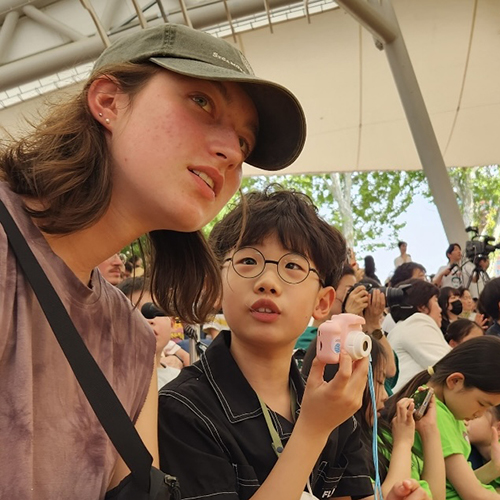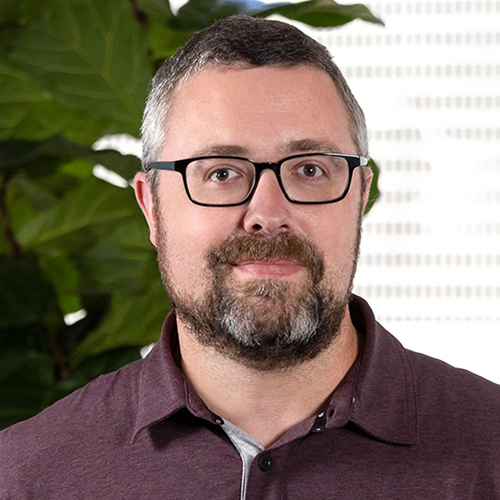A&S alumna Maura O’Neill (BA, ’77; PhD, ’09), began working for USAID in January 2010, just as a 7.0 earthquake devastated Haiti. Working tirelessly on the recovery effort from her post in Washington, DC, she generously took a moment to answer a few questions about the Haiti relief effort for Perspectives readers.
Why did you choose to work for USAID?

I had been working for Raj Shah at the U.S. Department of Agriculture (USDA) when he was nominated to head USAID. I decided to join him as his Senior Counselor and Director of Innovation. [O’Neill was senior advisor for Energy and Climate in the USDA, and previously served as chief of staff for US Senator Maria Cantwell.] Ten days after we started our jobs with USAID, the devastating earthquake hit Haiti. As the agency in charge of international development and disaster relief, we kicked into gear minutes after getting notice. One minute after the earthquake was recorded, the Coast Guard turned around four of its cutters patroling south of Haiti and went back to start helping.
Are there conditions in Haiti that have made the relief effort particularly difficult?
One third of the people in Haiti were shaken by this earthquake. It would be like a disaster striking the U.S. and within minutes affecting one third of our population—100 million people. The death toll in Haiti, which continues to rise, is [as of January 31] at 125,000.
Since the earthquake centered near the capital city, it wiped out almost all of Haiti's federal government, including 13 out of the 15 ministry buildings, including the Presidency and the health ministry. The commercial infrastructure of the country was also almost entirely destroyed—the entire landline telephone system, the port, the control tower for the international airport, the UN peacekeeping troops. The ability to get supplies and relief workers to the country quickly was hampered by an airport that could only handle ten percent of the planes wanting to land. There was no major operating seaport. And layered on top of this was the huge loss of life that each of the non-government relief and development agencies that had been operating in Haiti also suffered.
Despite the odds stacked against everyone, the determined spirit of the Haitian people was palpable throughout the days following. The UN reported more live rescues than in any other previous massive disaster. With homes obliterated, precious family members lost, and what few jobs they had gone, there has been relatively little rioting, looting, or violence. The Haitian people are a special lot and we have much to learn from their strength, resilience, and sense of community.
Can you describe your experience during the days immediately following the earthquake?
My first full day of work was the day the earthquake struck. (Before that, I had been dividing my time between USDA and USAID.) Within an hour of the earthquake, USAID opened its Response Operations Center, focused on supporting the disaster needs of the field. There was a desk and telephone for each sector of the response team, staffed 24/7. The Administrator pulled his top team together and we began planning and mobilizing, even though teams would not be able to see the extent of the damage and know whether the airport and seaports were safe to enter until the sun came up twelve hours later.
For the next two weeks, most USAID staff went home for only a few hours to sleep each day. Given the magnitude of the destruction, we were constantly devising new and better ways to respond. Ninety NGOs were on the ground and the UN triggered its 'cluster response' system, devised after the 2004 Asian tsunami.

If I stopped to feel how exhausted I was working round the clock in DC, I realized it was nothing compared to those on the ground searching for loved ones. US officials in Haiti relentlessly tried to deliver relief services under the most difficult of conditions with compassion and determination.
The whole of US government response was impressive. President Obama named my boss, Raj Shah, coordinator for the recovery. Top talent from FEMA, HHS, FCC, DOE, USDA, Commerce, GSA, all branches of the military, and the White House came flooding in. A command structure was put in place and refined as the needs grew and the breadth of the response expanded. Despite so many people from different parts of government working side by side, there were almost no political turf battles—almost stunning to see. Everyone knew that what was important was saving lives and that every minute mattered.
What would be the most effective way for people to help with the relief effort?
Giving cash really is the best. It is the easiest to transport, can be focused on the most immediate and changing needs, and can be used to purchase goods/services locally so the Haitian economy can get back on its feet. Presidents Clinton and Bush have started a fund that is a great place to give. For more information, visit www.clintonbushhaitifund.org.
New technologies have also been used to raise funds for Haiti—and to find and rescue people. Some Haitians buried under rubble were located after they texted their relatives. On the fundraising side, the U.S. State Department came up with the idea of a text fundraising code that led to over $20 million in donations within days to the Red Cross. The largest amount The Red Cross had gotten in a text appeal before this was $200,000.
The swiftness and generosity of the American people to this tragedy took all of our breath away. And I know everyone is committed to help Haiti rebuild for tomorrow's economy, not yesterday's. Look to some really innovative new approaches being rolled out. What is on the drawing boards already is exciting.
What lessons do you take away from this experience?
The earthquake crippled much of the world's ability to quickly respond. NGOs operating in the country lost many workers who could have immediately started helping. The UN building, along with most its staff, was also wiped out. The commercial infrastructure of the country collapsed. And being an island, there were few ways to get people and supplies in to help.
Yet, the world didn't stop caring. People kept mobilizing, moment by moment, day by day. May Haiti be a reminder of what is possible when we care about our neighbors. And let us remain committed to a brighter future. Before the earthquake, 380,000 Haitian children were already orphans. May we forge new approaches so that the children of Haiti can realize their full potential and become the nation's next leaders.
More Stories

Finding Family in Korea Through Language & Plants
Through her love of languages and plants — and some serendipity — UW junior Katie Ruesink connected with a Korean family while studying in Seoul.

Working Toward Responsible AI
Artificial intelligence (AI) is an essential tool at Indeed, a global job-matching and hiring platform. Trey Causey (2009) works to ensure that the company's AI promotes equity and fairness.

Celebrating Contemporary Indigenous Music
Markus Teuton, a musician and citizen of Cherokee Nation, explores contemporary Indigenous music through his academic work and as host of “Indigenous Jazz,” a radio show.